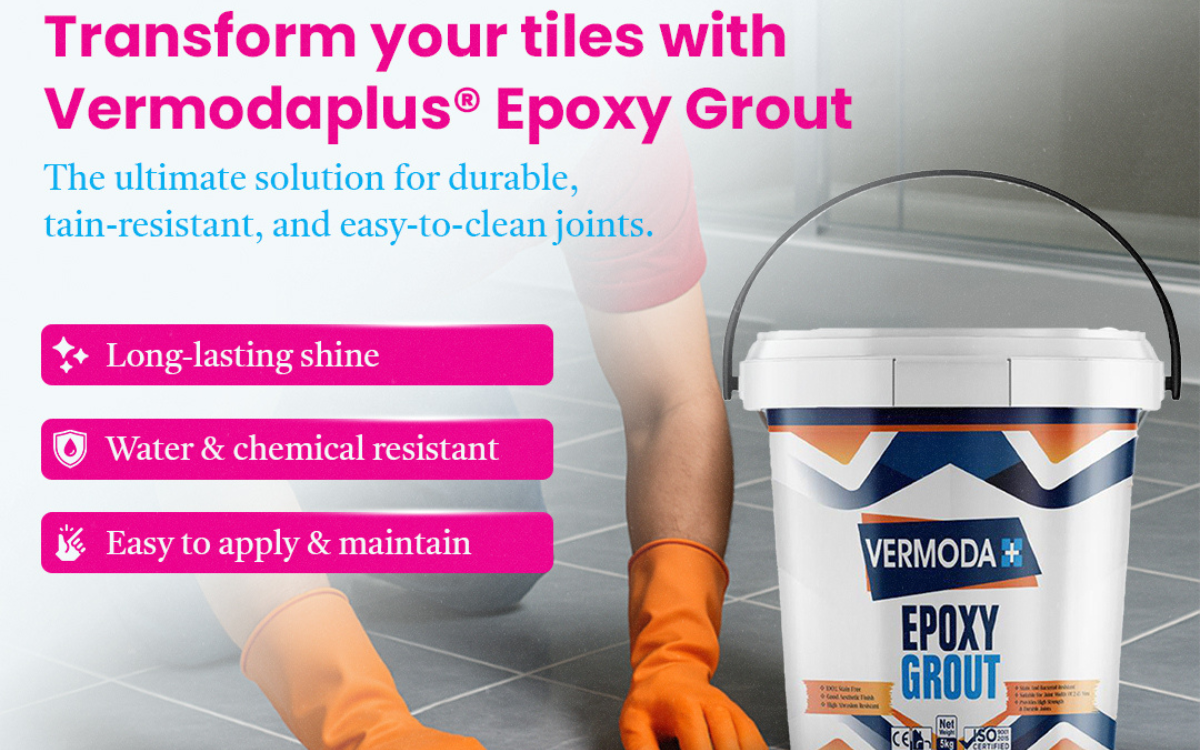During the exercise of tiling your house, office, or commercial building, there is one key decision that can make or break the entire appearance and longevity of the job: tile adhesive or cement? Indian builders and residents have been employing cement for decades to fix tiles.But with present building methods, tile adhesive is the intelligent, superior choice.
When you are going to use tiles in walls, floors, or outdoors, you will need to know the difference between tile adhesive and cement so that you can make the correct decision. Let us briefly describe their characteristics, benefits, drawbacks, and best areas of usage for both.
What is Tile Adhesive?
Adhesive tile is a type of special chemical compound employed for sticking tiles to various surfaces. Adhesive tile contains fine sand, cement, polymer, and special chemicals that are accountable for imparting strong adhesion, flexibility, and water resistance.
The biggest advantage of tile adhesive is that it is specifically made for application in tiling work. Whether you are using ceramic, vitrified, or even marble tile, there will be a tile adhesive that is suited to the job. It is just as suitable for the adhesive wall tiles as it is for the floor tile adhesive work.
There are various types of tile fixing adhesive in the market:
1) Wall tile adhesive – for walls such as bathrooms, kitchen, or feature walls
2) Floor tile adhesive – used for tiling floors in residential homes, offices, and outdoor areas
3) Waterproof tile adhesive – for areas that are prone to moisture like balconies, bathrooms, and swimming pools
4) Adhesive for marble – used for sticking natural stone tiles such as marble or granite
What is Cement?
Age-old sand-cement mortar was the do-all solution to repair tiles in India for years. It’s simply cement, sand, and water all mixed together that serves its function by locking together mechanically between the surface and the tile.
Although cement is inexpensive and ubiquitous, it lacks the needed flexibility, stickiness, and durability performance requirements of contemporary building. With more popularity of newer types of tiles such as ceramic and vitrified tiles, cement cannot always deliver long-term performance, particularly in the case of areas having moisture or more foot traffic.
Tile Adhesive vs Cement: The Key Differences
Let’s go a little deeper into how tile adhesive stands against cement in different factors important to homeowners and builders both:
1. Bonding Strength
- Tile Adhesive: Tile adhesive possesses one big advantage when it comes to the strength of chemical bonding. It seeps into the surface of the tile and adheres it with great strength, the bond lasting for decades..
- Cement: Cement creates a mechanical hold only, which deteriorates after several years, particularly if there are any vibrations or moisture.
2. Ease to Use
- Tile Adhesive: In powder form ready to use. You simply have to mix it with water, and you’re done. Tiles don’t need soaking in water prior to use.
- Cement: It requires thorough hand mixing with sand and water in proper amounts. Tiles must be pre-soaked to avoid dryness.
3. Thickness of Application
- Tile Adhesive: Demands a thin coat of 3mm to 4mm. It reduces the load on floors and walls and also provides a cleaner finish.
- Cement: Demands a 10-12mm thick coat, thus heavier installations and increased material usage..
4. Saving Time
- Tile Adhesive: Saves time when installing. You can grout after 24 hours, accelerating the construction or renovation process.
- Cement: More time-consuming to prepare, apply, and dry. Grouting must be postponed for a minimum of 3-4 days.
5. Water Resistance
- Waterproof Tile Adhesive: Performed very well in wet areas such as bathrooms, kitchens, balconies, and swimming pools. Water resistance avoids seepage, fungus, or loosening
- Cement: Cement is permeable and permits slow moisture penetration with the passage of time, leading to fungus, cracking, and water seepage..
6. Flexibility and the Durability
- Tile Adhesive: So flexible that it can cope with movement of the substrate, vibration, and minor shifting without cracking. It will expand and contract slightly with temperature variations.
- Cement: Naturally brittle. Even minimal substrate movement or expansion with temperature fluctuations can create cracks and loose tiles.
7. Compatibility with Tile Types
- Tile Adhesive: Good for ceramic tiles, vitrified tiles, marble, granite, glass mosaic, and even big-size tiles. Whether adhesive tile floor or adhesive wall tiles, it covers all..
- Cement: : Good quite well for little ceramic tiles for dry surfaces but does not suit big tiles, sleek tiles, or natural stones.
8. Cost Comparison
- Tile Adhesive: Slightly more expensive initially, yet with less wastage, quicker completion, and fewer repairs in the future, it is economical in the long term.
- Cement: Lower initial cost but greater risk of future repairs and maintenance, hence being costly in the long run.
Why Indian Homes Prefer Tile Adhesive Today
With improvement in building standards in India, tile adhesive has emerged as the preferred choice for contractors, builders, and residents. Particularly in Indian households where temperature fluctuations, humidity, and high footfalls are the norms, tile adhesive is more protective and durable.
Here’s why increasing numbers of Indians now prefer tile glue adhesive to cement:
- Increased bonding: Particularly useful for silky tiles such as vitrified or polished ceramic.
- Time and labor saving: Faster tiling means quicker project completion.
- Works with contemporary tiles: Is compatible with contemporary designs and bigger tiles.
- Moisture resistance: Helps bathrooms, kitchens, and exterior spaces to look better for longer.
For whoever is considering using bonding tiles for new or renovation constructions be it repairing ceramic, porcelain, or even marble having the best tile adhesive guarantees a professional finish
When is Cement Still Used?
There are still some situations where classic cement mortar may be applied:
- For very tight budgets on projects.
- For exterior plastering and leveling operations prior to actual tile installation.
- For minor, short-term structures where strength is not an issue.
But for everyone who is making a long-term investment in their living or commercial space, tile adhesive is the better, more dependable option.
Why Go with Vermoda for Your Tile Adhesive Requirements?
If you’re looking for high-quality tile adhesives in India, Vermoda is your go-to partner. Being one of the biggest dealers in tile adhesives in North India, Vermoda offers you the best-tested and quality products for any type of tile work.
Vermoda has the best portfolio of adhesive for marble, ceramic adhesive, and more. Their Indian conditions-specific products promise strength, flexibility, and water resistance where you need it most.
Discover their full product list today at Vermoda and avail expert support for all your tiling needs. Use Vermoda for a stunning, long-lasting finish every times


